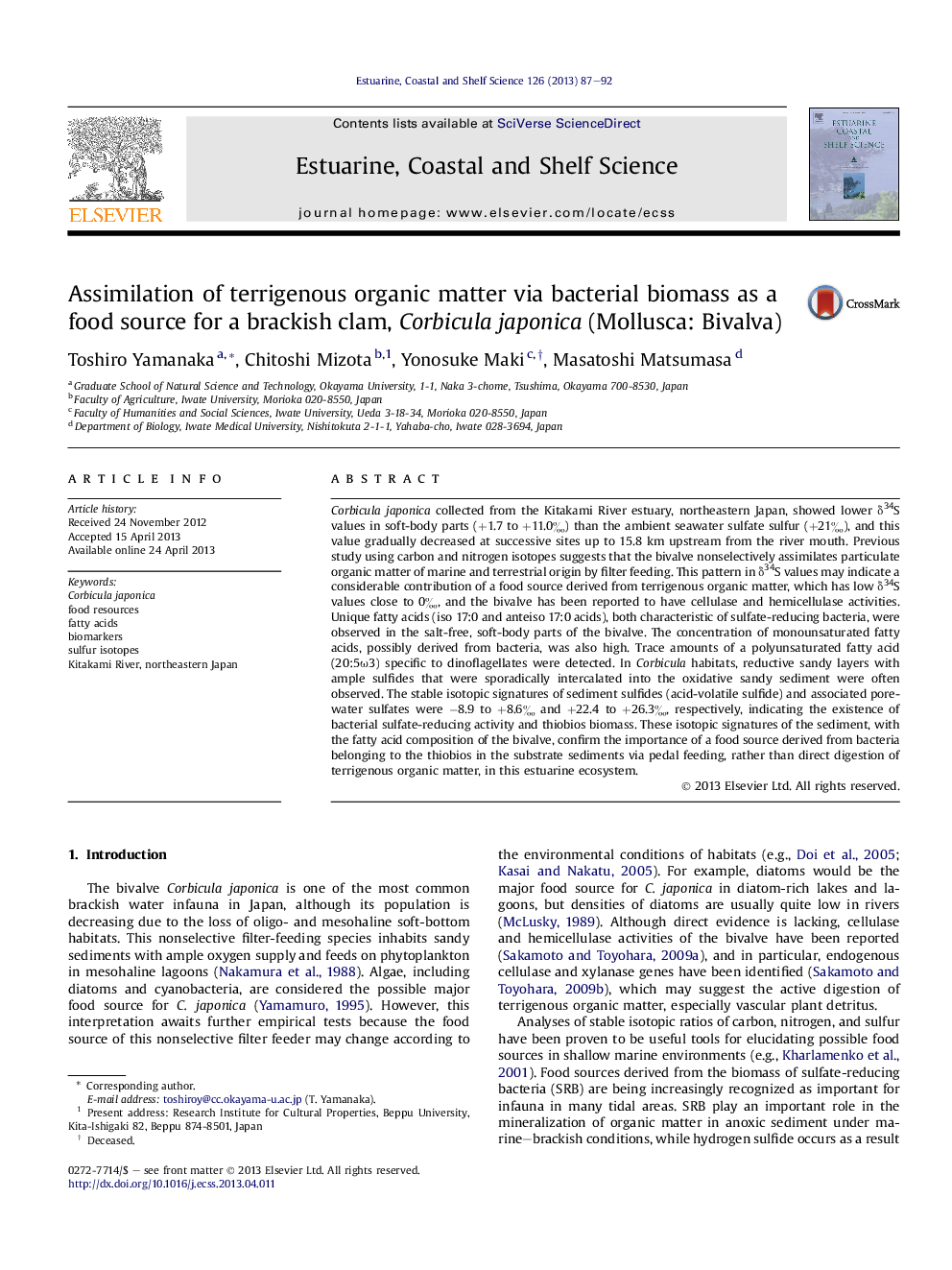| کد مقاله | کد نشریه | سال انتشار | مقاله انگلیسی | نسخه تمام متن |
|---|---|---|---|---|
| 4539896 | 1626670 | 2013 | 6 صفحه PDF | دانلود رایگان |

Corbicula japonica collected from the Kitakami River estuary, northeastern Japan, showed lower δ34S values in soft-body parts (+1.7 to +11.0‰) than the ambient seawater sulfate sulfur (+21‰), and this value gradually decreased at successive sites up to 15.8 km upstream from the river mouth. Previous study using carbon and nitrogen isotopes suggests that the bivalve nonselectively assimilates particulate organic matter of marine and terrestrial origin by filter feeding. This pattern in δ34S values may indicate a considerable contribution of a food source derived from terrigenous organic matter, which has low δ34S values close to 0‰, and the bivalve has been reported to have cellulase and hemicellulase activities. Unique fatty acids (iso 17:0 and anteiso 17:0 acids), both characteristic of sulfate-reducing bacteria, were observed in the salt-free, soft-body parts of the bivalve. The concentration of monounsaturated fatty acids, possibly derived from bacteria, was also high. Trace amounts of a polyunsaturated fatty acid (20:5ω3) specific to dinoflagellates were detected. In Corbicula habitats, reductive sandy layers with ample sulfides that were sporadically intercalated into the oxidative sandy sediment were often observed. The stable isotopic signatures of sediment sulfides (acid-volatile sulfide) and associated pore-water sulfates were −8.9 to +8.6‰ and +22.4 to +26.3‰, respectively, indicating the existence of bacterial sulfate-reducing activity and thiobios biomass. These isotopic signatures of the sediment, with the fatty acid composition of the bivalve, confirm the importance of a food source derived from bacteria belonging to the thiobios in the substrate sediments via pedal feeding, rather than direct digestion of terrigenous organic matter, in this estuarine ecosystem.
Journal: Estuarine, Coastal and Shelf Science - Volume 126, 10 July 2013, Pages 87–92